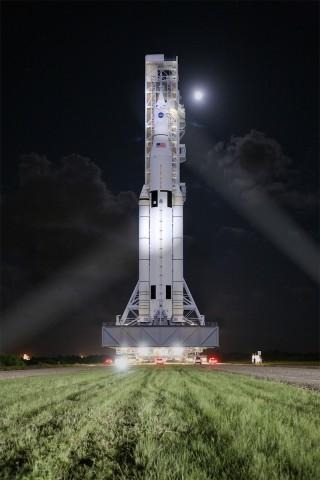NASA Approves "Most Powerful Rocket In History"
NASA has given the green light to develop the Space Launch System (SLS), the most powerful rocket in history and the method by which the US space agency expects to take humans to Mars. Under development for the past three years, the SLS is the first exploration-class vehicle to make it to development stage since the Space Shuttle, with NASA targeting the first test flight by November 2018 at the latest.
That test flight will see a 70-metric-ton (77 imperial ton) version of the Space Launch System take an Orion spacecraft beyond low-Earth orbit. The craft will be unmanned at the time, however, and the rocket will be a relatively low-lift version of the overall design.

For instance, the most powerful configuration of the SLS its designers have envisaged is 130 metric tons (143 imperial tons). It's that sort of capacity that would be required for a manned mission to Mars or, indeed, a distant asteroid.
Initially, though, NASA is budgeting more than seven billion dollars between February of this year and November 2018 to develop the 70 metric ton version.
Three simultaneous projects will in fact be underway – the rocket, the ground systems to support and launch it, and the Orion spacecraft within which a crew will travel – with the first Orion flight, dubbed Exploration Flight Test-1, expected to take place in December this year.
The stage adapter used will be the same as the SLS eventually is fitted with.
Each SLS launch will use four RS-25 engines, of which NASA currently has a stockpile of sixteen. The five-segment solid rocket boosters have been successfully tested, while the motor tests are about to enter qualification stage.
SOURCE NASA
